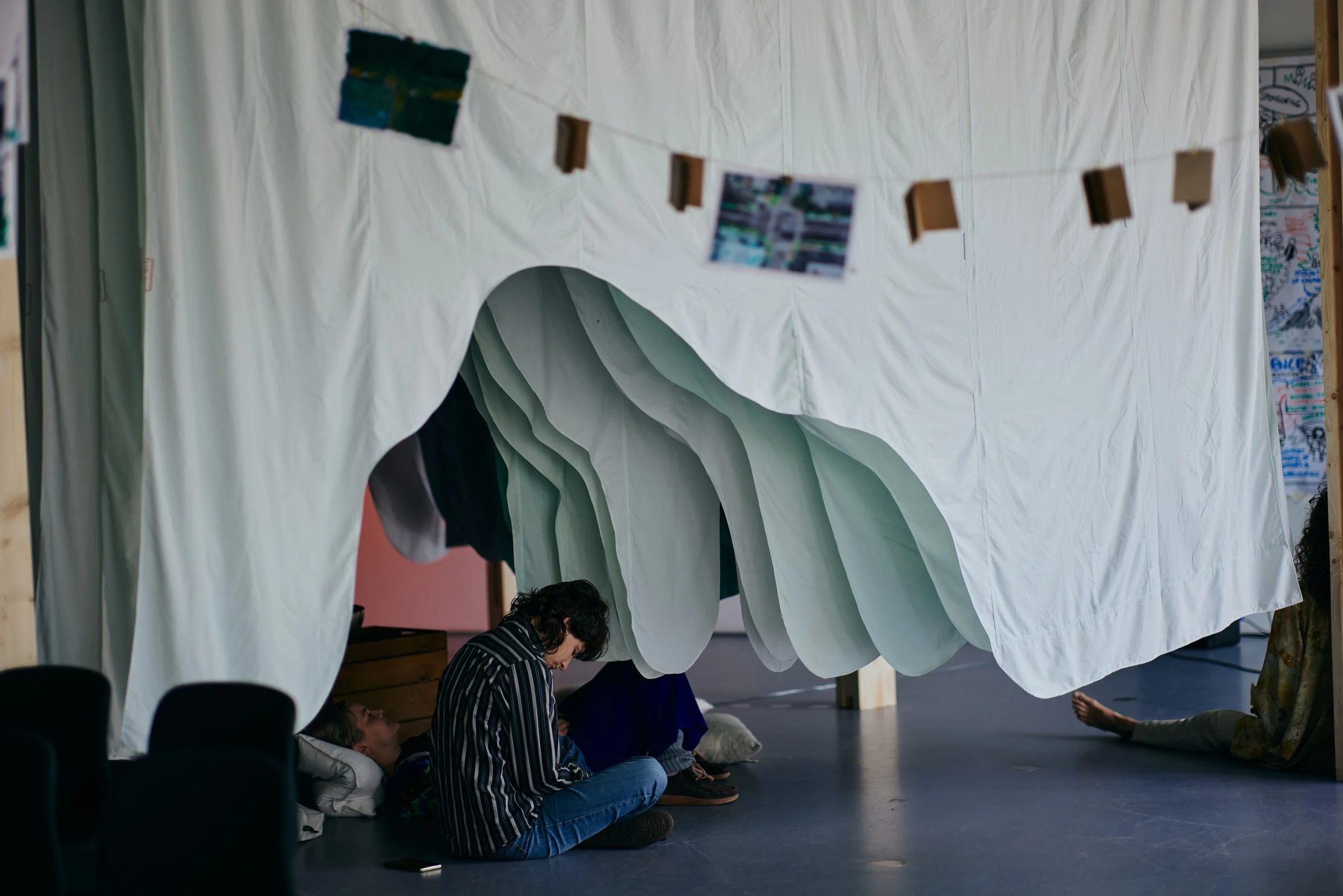Art at the Wellbeing Economy Conference
On two spring days in May 2024, over 1,000 people gathered in Copenhagen to imagine a different kind of future - one grounded not in growth at all costs, but in wellbeing. The inaugural Wellbeing Economy Conference brought together policymakers, researchers, citizens, and visionaries to lay the foundations for an economy rooted in care, regeneration, and long-term thinking.
We at Planetarium were honored to be asked to curate the artistic dimension of this event - an opportunity to explore how art can act not as decoration, but as provocation and guidance in navigating a societal shift.
Why art belongs at the heart of systemic change
Paradigm shifts are not just technical or policy challenges; they’re existential. They require us to unlearn and reimagine. This kind of transformation demands more than data - it calls for new ways of seeing, sensing, and feeling. Art has a unique capacity to speak to what lies beyond the rational: to confront our subconscious patterns, illuminate the contradictions in our worldview, and open space for new narratives to emerge.
At the Wellbeing Economy Conference, we saw art not as a break from the program, but as a vital thread within it - a way to challenge binaries like human vs. nature, mind vs. body, thought vs. feeling. Our concept focused on working with different expressions of nature as a guide for introspection, offering participants moments of stillness and depth in the midst of an otherwise intellectually charged atmosphere.We were asked to do the concept for art and art curation at the wellbeing economy conference. We decided to work with different expressions of nature to guide participants for a more introsceptice experience and challenge the distinction of human vs nature. We created rooms for reflections and invited artists to do talks and performances as part of the conference program.
Curating with the nature of nature as compass
In researching artists for the event, we were drawn to those whose work carries a certain rawness - who lean into the mysterious and ambiguous rather than offering easy answers. We found particular inspiration in:
Jacob Aue Sobol, whose close-up, monochrome photographs depict the visceral intimacy of everyday life. His work strips away the distance between observer and subject, asking us to feel rather than analyze.
Rune Bosse, whose installations made of forest materials trace ephemeral pathways, inviting participants to walk between life and decay. His art acts as a physical metaphor for internal transformation - a gentle crossing into new states of being.
Ellen Ehk and Pauline Fransson, whose sculptural and painted landscapes blur the boundary between external wilderness and inner terrain. Their playful, organic forms remind us that the line between "out there" and "in here" is far more porous than we tend to think.
Philosophically, we were influenced by thinkers like Allan Watts and Slavoj Žižek - those who remind us that looking into the shadows, the uncomfortable, and the irrational is often the first step toward real clarity. To shift paradigms, we must first confront the blind spots of our current one.
Creating spaces to feel, not just think
At the conference, we curated not only static works but also experiences. We created a dedicated reflection room - a soft, quiet sanctuary amidst the bustling venue. With cushions, ambient light, subtle scent, and soundscapes, it was a place where participants could process, dream, or simply pause.
Sound performances by Emilie Lykkegaard Schmidt and Margrethe Møller invited participants to dwell in the slowness, the fragility, and the stillness of the climate crisis - an emotional register rarely given space in policy discussions. These performances weren't about conveying facts, but about inviting a deeper presence with the stakes of our time.
A collective inquiry: What Do We Have In Common?
With this curation, we posed a question: What do we have in common? - with each other, with nature, with the systems we seek to change. Art offered a way to explore that question beyond the confines of language and logic. It invited both discomfort and connection, wonder and grief.
We are deeply grateful to the Wellbeing Economy Alliance Denmark for inviting us to be part of this transformative event, and to the KR Foundation and Tuborg Fondet for supporting our work.
To see the full list of participating artists and explore the conference program, visit: https://www.weall.dk/en/art-and-culture-at-the-conference






